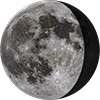Position of Saturn's Rings and Moons
Using this application it is possible to compute and visualize the inclination of rings of Saturn and the position of its major moons - Mimas, Enceladus, Tethys, Dione, Rhea, Titan, Hyperion, Iapetus - as they would appear right now or at any given time in the past and in the future. Using these application it is then possible to identify the moons of Saturn during a visual observation or on photographic images (if the date and time of the capture is known).

Credits
The algorithms to compute the inclination of the rings and the positions of the moons of Saturn used in this application are based on the astronomia Javascript libraty which, in turn, is based on algorithms published by Jean Meeus on his Astronomical Algorithms book. The image of the disc of Saturn is derived by an original image credited to NASA/JPL/Space Science Institute.



